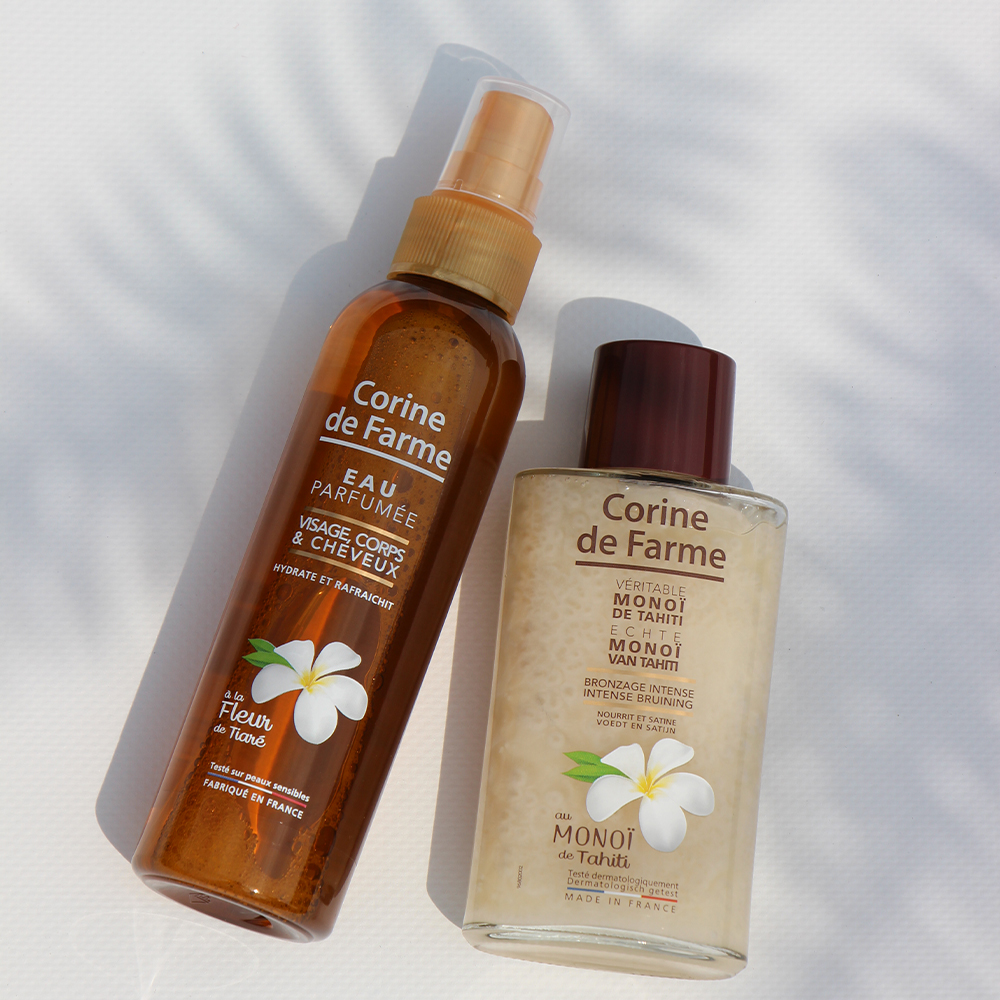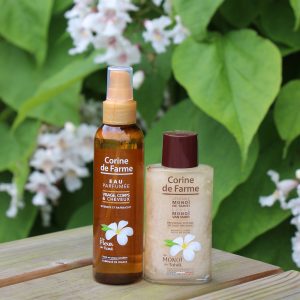4 Myths About Sunscreens: Let’s Debunk Them Together!
Sunscreens, although recommended everywhere and for everyone, suffer from a certain lack of understanding that has led to a few myths—which Sacrées Natures has decided to debunk for you today.

“Sunscreen prevents tanning”
Wearing total sunblock would prevent tanning and therefore protect 100% from sunburn. That’s false! Not only does sunscreen not prevent you from tanning—in fact, your skin won’t stay milky white if you go out in the sun after applying it—but it also only “reduces” the impact of the sun.
Sunscreens actually act as a buffer by protecting the skin from redness, overheating, sunburn, skin aging, and more serious risks caused by UVA and UVB rays.
So yes, not only can you tan while wearing sunscreen, but to be well protected, you need to apply the right SPF for your skin type.
For fair or very fair skin (phototypes I and II), which are more prone to sunburn, SPF 50+ is recommended, while for medium to dark skin (phototypes III to VI), SPF 30 can be chosen.
“One application is enough for the whole day”
You may have already heard that it’s enough to apply your sunscreen before going to the beach to be protected all day. Once again, that’s false. Not only are most sunscreens not resistant to water and sweat, but even if you stay on the sand, the strength of the sun’s rays requires regular reapplication.
On average, and regardless of the protection factor you choose, your sunscreen should be applied every two to three hours, evenly, over your entire body. Whether you use a cream, a spray, or an oil makes no difference. An effective sunscreen is one that is reapplied regularly.
Also, don’t skimp on the amount. Most sunscreens no longer leave a “white cast” on the skin, so you don’t have to worry about that when it comes to your summer body. Corine de Farme recommends, on average, 7 teaspoons to protect your whole body.
So, if you go swimming, if you go in and out of the water and dry yourself off each time… don’t forget to reapply your UV protection.
Tanning accelerator… Why does it work?
Can you tan with sunscreen? The answer is yes, and it’s normal
Sunscreen that activates tanning
How to prepare your skin for the sun before the holidays

“I can reuse my sunscreen from one year to the next”
Every summer has its own sunscreen! It’s as simple as that. Of course, if you go away several times, if you fly off to the sun this winter, or if this year you’re stringing together golden vacations, you can keep your sunscreen until its expiration date.
On the other hand, if the long summer holidays are your favorite time to disconnect and you save up all your days to enjoy them, don’t forget to change your sunscreen. Yes, for optimal sun protection, it’s best to stack the odds in your favor!
The only exception is the tube that hasn’t been opened yet. Bought in advance or as a backup, as long as it remains sealed, it can be kept for up to 3 years. Opened sunscreens, on the other hand, have a maximum shelf life of 12 months, indicated by the small logo shaped like an open jar.
One sunscreen product is enough for the whole family
Finally, it often happens that suitcases contain only one tube of sunscreen for the whole family. While it’s true that family protection is better than none at all, every skin deserves a sunscreen suited to its needs and sensitivities.
Babies, for example, need very high sun protection to prevent their delicate skin from getting sunburned. In addition, specialists recommend always dressing them in light but covering clothes, and to always favor shade between 12 and 4 pm.
If you’re unsure, know that you can always ask your pharmacist or dermatologist for a sun protection diagnosis to find out which sunscreen to buy, how to apply it, and which protection factor is best for you.
And, cherry on top, did you know that Corine de Farme offers organic sunscreens, certified by Ecocert? Respectful of your skin and the environment, to better protect you, they undergo numerous checks before being delivered to you!
What is the duration of sun protection?












